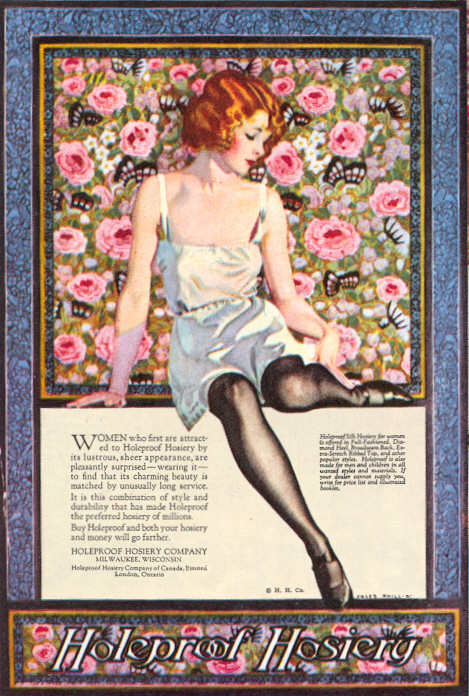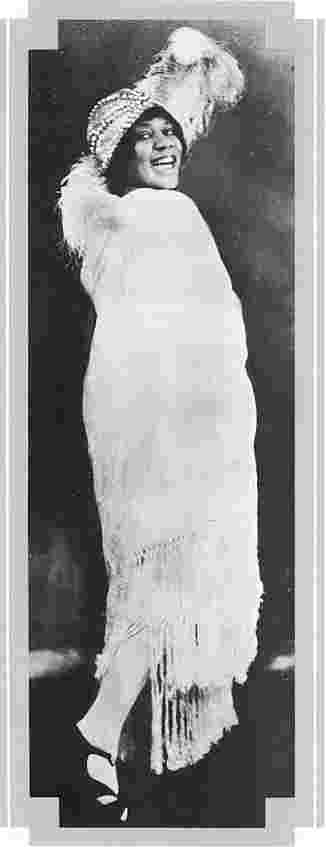





 |
Jazz music was a propelling force in the Women's Liberation Movement in the United States during the 1920s. Women had been the largest faction of supporters for the ratification of the 18th and 19th Amendments. Prohibition and the Suffrage Movement were almost completely pursued by women's organizations. With these recent victories to pave the way for a more comprehensive empowerment for women, jazz music provided females of all ages with an outlet for rebellion. Jazz music helped to provide jobs for women within the music industry, and expanded the base of women as a consumer target market. |
| Frederick Allen stated that "Women were the guardians of morality; they were made of finer stuff than men and were to act accordingly" (Only Yesterday p.73). This view of women was widely accepted before World War I, but was rejected by most women in the 1920s, which was partly due to the success of the eighteenth and nineteenth constitutional amendments. Women rebelled against their traditional roles as daughters and mothers. Women wanted to be seen as individuals outside of their familial roles. Jazz provided an outlet for rebellion in several ways. The dance halls, jazz clubs, and speakeasies were places where women could escape from the traditional roles that were demanded of them by a rigid society. Here, women were allowed greater freedom in their language, clothing, and behavior. Like the Freudian psychology that was rampant in the 1920s, jazz also encouraged "infantile" behavior; Flappers who frequented these establishment were often referred to as "Jazz Babies." Jazz encouraged primitive and sexual behavior through the uninhibited and improvisational feel of the music. Jazz music was rejected by the older generation, and therefore, jazz music and jazz dancing were ideal ways for young women (and even men) to rebel against the society of their parents and grandparents. |
 |
The Advertising Industry acknowledged the expanding base of women in the consumer market during the 1920s. The younger generation of Flappers became the targeted as independent and carefree consumers. During the course of the 1920s, young flappers or "jazz babies" became targeted for consumer goods which they were not previously expected to purchase, such as cars, radios, motors, land, life insurance, etc. Young women were also seen as independent purchasers of many new consumer goods, most of these goods revolved around jazz culture, such as dancing garments, radios, recordings, cosmetics, and musical instruments. The advertisements that were aimed at this new consumer group were distinctly different from previous advertisements that had targeted young women. The flapper advertisements reflected their independence from men, their parents, and their grandparents. Advertisers strove to appeal to the flapper generation by reflecting their new ideas and morals. For example, Holeproof Hosiery (left) ceased placing men in their advertisements, and showed that they were a "modern" product by displaying scantily clad women with short hair in their advertisements, whereas in the past Holeproof displayed women fully clothed and on the arm of a man. |
This advertisement (left) for Philco Slotted Retainer Batteries (1923) is an excellent example of the expansion of women in the consumer market and how advertisers targeted flappers as consumers. Like many advertisements aimed at "jazz babies," the Philco advertisement is devoid of men. Flappers wanted to be viewed as independent and worldly women, and advertisers responded to this demand with adds that reflected the values of the young female consumers.

Jazz music provided many new jobs for women during the 1920s. Women like Lil' Hardin, Bessie Smith, and Ma Rainy paved the way for women to pursue careers in the popular performing arts. Prior the the 1920s, almost all popular music was performed exclusively by male musicians. Due to the popularity of Hardin's compositions and Smith's wildly popular recordings, other women began to pursue careers in the music industry. Jazz music motivated the first Broadway musical, Showboat, which opened in 1927. This opened up a whole new realm of possible careers for women on stage, both on and off Broadway. Throughout the 1920s, radio shows became increasingly popular, and with this popularity came jobs for women. Jazz clubs, speakeasies, and stage shows were encouraged to have flappers employed at these establishments, in order to appeal to the "liberated" youth culture of the 1920s. Women also found positions the advertising, cosmetic, and clothing industries, all of which are related to the jazz culture of the time.